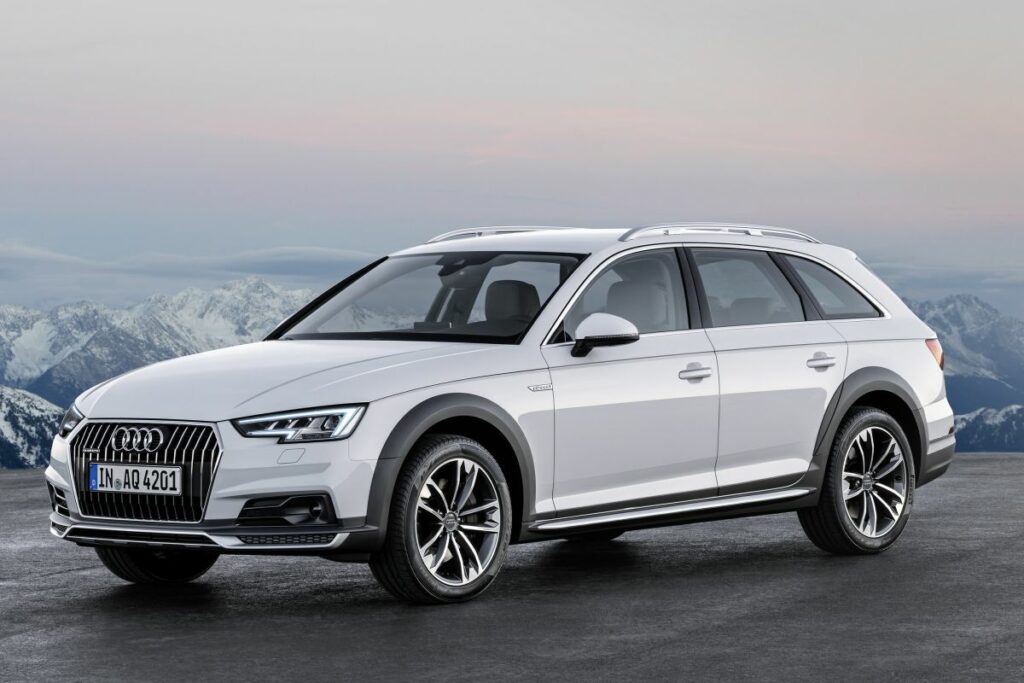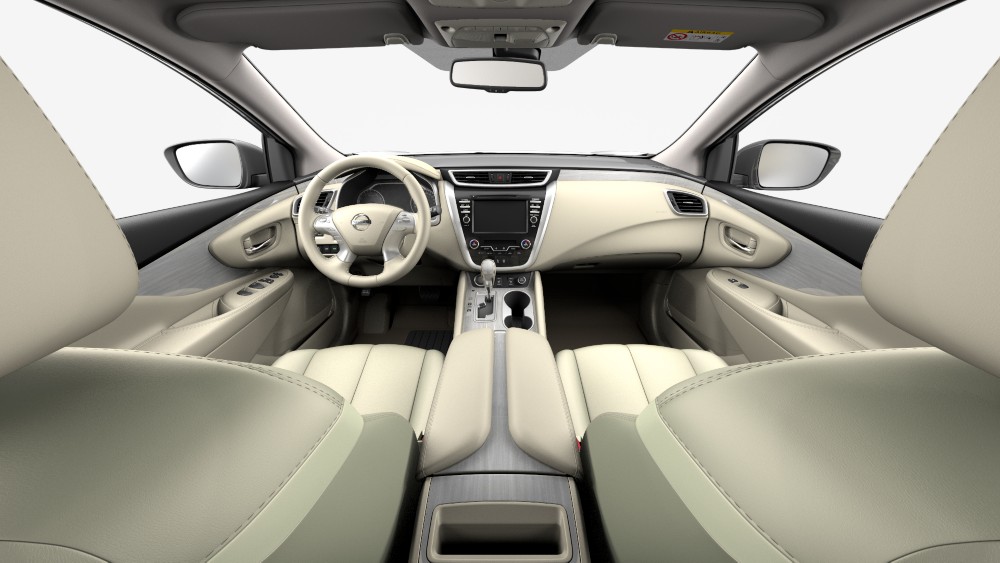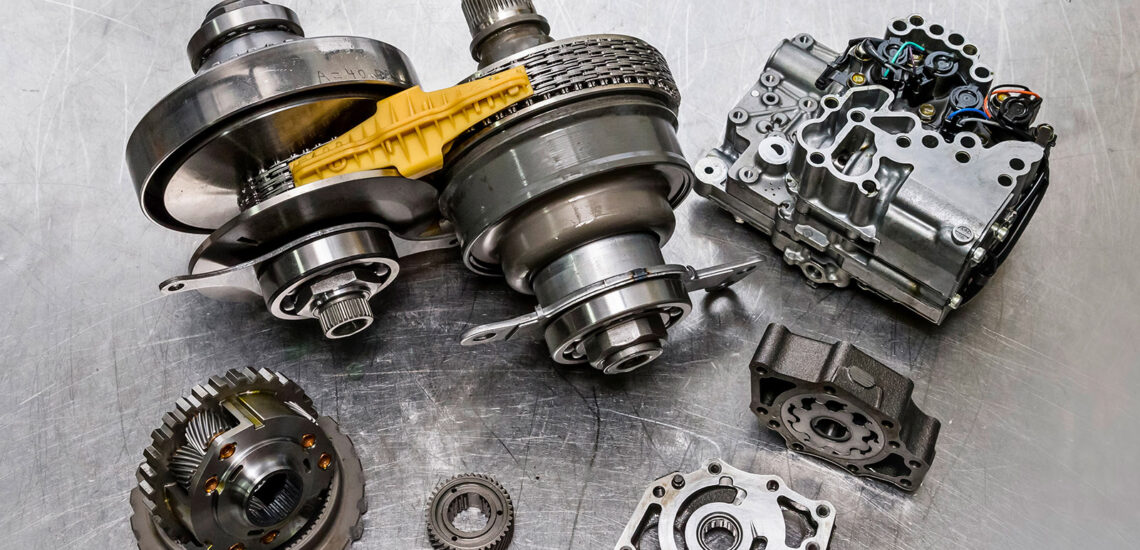« Un variateur à variation continue est installé sur la voiture » – beaucoup d’entre nous ont rencontré cette phrase en feuilletant des catalogues automobiles. Ou bien vous pouvez voir cette combinaison de mots dans un tableau de caractéristiques techniques. Tout le monde sait ce qu’est une boîte de vitesses manuelle (sauf les Américains), tout le monde est habitué depuis longtemps à une boîte de vitesses automatique (surtout les Américains). En revanche, le variateur est relativement peu connu. Mais ce n’est pas une nouveauté.
Vous serez surpris d’apprendre que cette invention n’appartient pas à Honda ni même à Mercedes. Le brevet du variateur a été délivré à la fin du 19e siècle ! D’ailleurs, le premier variateur a été inventé en 1490. Le barbu bonhomme Léonard de Vinci en est l’auteur.
Cependant, la première voiture fonctionnelle équipée de ce type de transmission n’est pas apparue à la Renaissance, mais plus tard, environ cinq cents ans plus tard, dans les années 1950. Le variateur a été installé commercialement sur les voitures DAF (à l’époque, cette marque produisait non seulement des camions, mais aussi des voitures particulières). Volvo a ensuite commencé à produire quelque chose de similaire, mais ce n’est que maintenant que les variateurs se sont vraiment répandus.
En fait, le variateur (également appelé transmission à variation continue) est, excusez la tautologie, une variante de la transmission automatique. Au premier abord, la voiture qui en est équipée ne se trahit en rien : il n’y a que deux pédales et un levier de changement de mode de transmission – P, R, N, D – identique à celui d’une voiture équipée d’une boîte de vitesses automatique classique. Tout est familier. Mais le variateur fonctionne d’une manière totalement différente. Il n’y a pas de première, deuxième ou dixième vitesse fixe. Essayez d’imaginer combien d’étoiles il y a dans notre univers ou combien de grains de sable il y a sur toutes les plages de la Terre réunies – le variateur a encore beaucoup plus de vitesses. Et le « changement de vitesse » se fait en douceur et de manière imperceptible.
C’est pourquoi il n’y a pas d’à-coups au démarrage et au « changement de vitesse ». Et ce n’est pas pour rien que nous avons écrit ce mot entre guillemets : il n’y a pas de changement de vitesse à proprement parler. Le variateur modifie continuellement et en douceur le rapport de vitesse lorsque la voiture accélère ou décélère.
Il existe plusieurs types de variateurs : Courroie trapézoïdale avec poulies réglables, chaîne, torique… Le premier type est le plus courant. Voyons comment il fonctionne. Voici un bon exemple : prenons deux crayons (cylindres) parallèles à une certaine distance l’un de l’autre. Nous les rapprochons à l’aide d’un élastique et commençons à faire tourner l’un d’entre eux. Le second se met à tourner immédiatement, à la même vitesse. Mais si les crayons sont de diamètres différents, c’est une toute autre histoire : l’un d’eux, plus grand, fera un tour, le second, disons, deux.
Le variateur ressemble à ceci, mais le diamètre des « crayons » change constamment. Il comporte deux poulies, chacune ayant la forme d’une paire de cônes se faisant face avec des extrémités pointues. Une courroie trapézoïdale est coincée entre les poulies.
Si chacune des paires de cônes peut se déplacer dans un sens et dans l’autre, nous obtiendrons des poulies de diamètre variable. En effet, lorsque les cônes sont séparés, la courroie qui est en contact avec eux par ses nervures tombe en quelque sorte au centre de la poulie et en fait le tour en suivant un petit rayon. Et lorsque les cônes se rapprochent, elle suit un grand rayon.
Il ne reste plus qu’à équiper les deux poulies d’un système (en règle générale, il s’agit d’un système hydraulique, mais il peut aussi y avoir d’autres asservissements), qui déplacera de manière strictement synchrone les moitiés de la première poulie et poussera les moitiés de la seconde. Et si l’une des poulies se trouve sur l’arbre moteur (qui part du moteur), et la seconde sur l’arbre entraîné (qui va aux roues), il est possible d’organiser un changement du rapport de transmission dans une gamme très large.
Il ne reste plus qu’à ajouter une unité chargée de changer le sens de rotation de l’arbre de sortie (pour la marche arrière), qui peut être, par exemple, un engrenage planétaire ordinaire. La boîte de vitesses à variateur est alors prête.
À ce propos, une question intéressante se pose : quel type de courroie est utilisé ici ? Bien sûr, une courroie ordinaire en caoutchouc et en tissu, comme celles qui font tourner les générateurs et autres accessoires, ne tiendrait même pas un millier de kilomètres. Les courroies des variateurs à courroie trapézoïdale ont un agencement complexe.
Il peut s’agir d’un ruban d’acier recouvert d’un certain revêtement ou d’un ensemble de câbles d’acier (rubans) de section composite, sur lesquels sont fixées un grand nombre de fines plaques d’acier transversales de forme trapézoïdale, dont les bords s’engagent dans les poulies. En fait, c’est de cette manière qu’il a été possible de créer une courroie de poussée qui transmet la puissance non seulement à la moitié de la courroie qui va de la poulie entraînée à la poulie motrice, mais aussi à la moitié opposée. Une courroie ordinaire, lorsqu’elle tente de transmettre une force de compression, se plie tout simplement, tandis qu’une courroie en acier jointé acquiert de la rigidité.
Par ailleurs, une large chaîne en acier peut également être utilisée comme courroie trapézoïdale, en touchant les cônes avec ses bords. C’est une telle « courroie » qui fonctionne dans les variateurs des voitures Audi.
Il est intéressant de noter qu’un liquide spécial, qui change d’état de phase sous l’effet d’une forte pression au point de contact avec la poulie, est utilisé pour lubrifier la chaîne. Grâce à cela, la chaîne peut transmettre une force importante, presque sans glissement, malgré une très petite surface de contact.
La façon dont le variateur va changer le rapport de vitesse pendant l’accélération dépend du programme de contrôle sélectionné. Lorsqu’on accélère sur une voiture classique, on fait monter le moteur en régime sur chaque rapport, puis on passe au rapport suivant, et ainsi de suite. Lorsqu’une voiture équipée d’un variateur accélère, le moteur reste au même régime (disons au régime correspondant à un couple maximal), mais le rapport de vitesse change en douceur.
Il en résulte une sensation quelque peu étrange. Vous appuyez sur la pédale d’accélérateur, le moteur passe à haut régime et y reste pendant toute l’accélération, hurlant comme un aspirateur. Mais le taux d’accélération est élevé, et on ne perd pas de temps à passer d’un rapport à l’autre.
Cependant, dans certains cas, le variateur est réglé de manière à ce que l’accélération ressemble davantage à une augmentation de la vitesse avec une boîte de vitesses classique, avec une augmentation progressive du régime moteur.

Bien entendu, lorsque vous essayez de monter une côte ou de ralentir la voiture, le variateur intelligent ne laissera pas le rapport supérieur engagé, malgré la pression exercée sur la pédale d’accélérateur. Les poulies reculeront rapidement pour prendre de l’altitude en toute confiance, afin d’augmenter le couple à la sortie de la boîte de vitesses.
Sur certaines voitures, vous pouvez également choisir un mode avec plusieurs rapports « virtuels » (6 ou même 8) réglés par l’électronique. Des rapports entre lesquels le variateur sautera brusquement, à la manière d’une boîte de vitesses automatique classique. Dans ce cas, vous pouvez également changer de « vitesse » à volonté. Comme sur une boîte automatique avec un mode séquentiel manuel.
Le variateur présente donc de nombreux avantages. Mais il y a aussi des inconvénients. Par exemple, la puissance du moteur « digérée » est relativement faible par rapport aux normes modernes. Ce n’est pas pour rien que ces boîtes de vitesses ont commencé à faire le tour du monde sur des voitures de petite cylindrée. Et aujourd’hui encore, les voitures puissantes sont très souvent équipées soit de boîtes de vitesses mécaniques, soit de boîtes de vitesses automatiques classiques, soit de boîtes de vitesses semi-automatiques.
Partout, il y a du progrès. Et là, impossible de ne pas se souvenir des détenteurs de records. Par exemple, le variateur Multitronic à courroie trapézoïdale (avec chaîne) de l’Audi A4 2.0 TFSI supporte sans problème un débit de 200 « chevaux ».
On pourrait dire que la classe D n’est pas tout. 200 ch ne peuvent plus être considérés comme une puissance aussi importante pour les voitures de luxe et d’affaires, et surtout pour un grand SUV. Mais les performances des variateurs les plus modernes ne se limitent pas à cela. Ainsi, le crossover Nissan Murano, équipé d’un V6 de 3,5 litres développant 234 ch, est doté d’un variateur à courroie trapézoïdale X-Tronic. Il s’agit de l’un des modèles les plus grands et les plus lourds équipés d’un variateur. Et demain, qu’en sera-t-il ?
Le deuxième inconvénient des variateurs est le coût relativement élevé de l’entretien et des réparations, l’utilisation d’un liquide de transmission spécial, et donc pas bon marché. Les variateurs à courroie peuvent nécessiter le remplacement de la courroie tous les 100 à 150 000 kilomètres. Dans le même temps, l’huile coûte un peu plus cher que celle d’une transmission automatique, mais elle peut être remplacée un peu moins souvent – environ après 40 à 50 000 kilomètres pour différents modèles de voitures.
Pourtant, les variateurs sont de plus en plus répandus sur les voitures de différentes catégories, et ils sont généralement moins chers que les bonnes boîtes de vitesses automatiques de type classique.
Comme les variateurs ont un nombre infini de rapports, ils permettent au moteur de fonctionner dans les modes les plus favorables – que l’on ait besoin d’une puissance maximale (lors des courses aux feux de circulation) ou, au contraire, de la douceur et de la moindre consommation de carburant (lors d’une conduite calme). Les modèles équipés de variateurs se distinguent donc, toutes choses égales par ailleurs, par une grande efficacité combinée à une dynamique non moins décente.

D’ailleurs, depuis peu, la tendance est à l’augmentation du nombre de rapports dans les boîtes de vitesses automatiques classiques. Dans les modèles les plus récents, il y a déjà 8 rapports (notons-le, sur une voiture de tourisme). Et ce, précisément pour combiner une dynamique élevée et l’efficacité. Verrons-nous bientôt des boîtes de vitesses automatiques à dix, voire douze rapports ? Mais les variateurs sont déjà là, là où les transmissions automatiques ordinaires avec leurs trains planétaires commutables n’arriveront jamais. En effet, le nombre d’engrenages du variateur est infini.
Il s’agit d’une traduction. Vous pouvez lire l’original ici : https://www.drive.ru/technic/4efb330200f11713001e32e2.html

Publié Février 10, 2022 • 9m à lire






